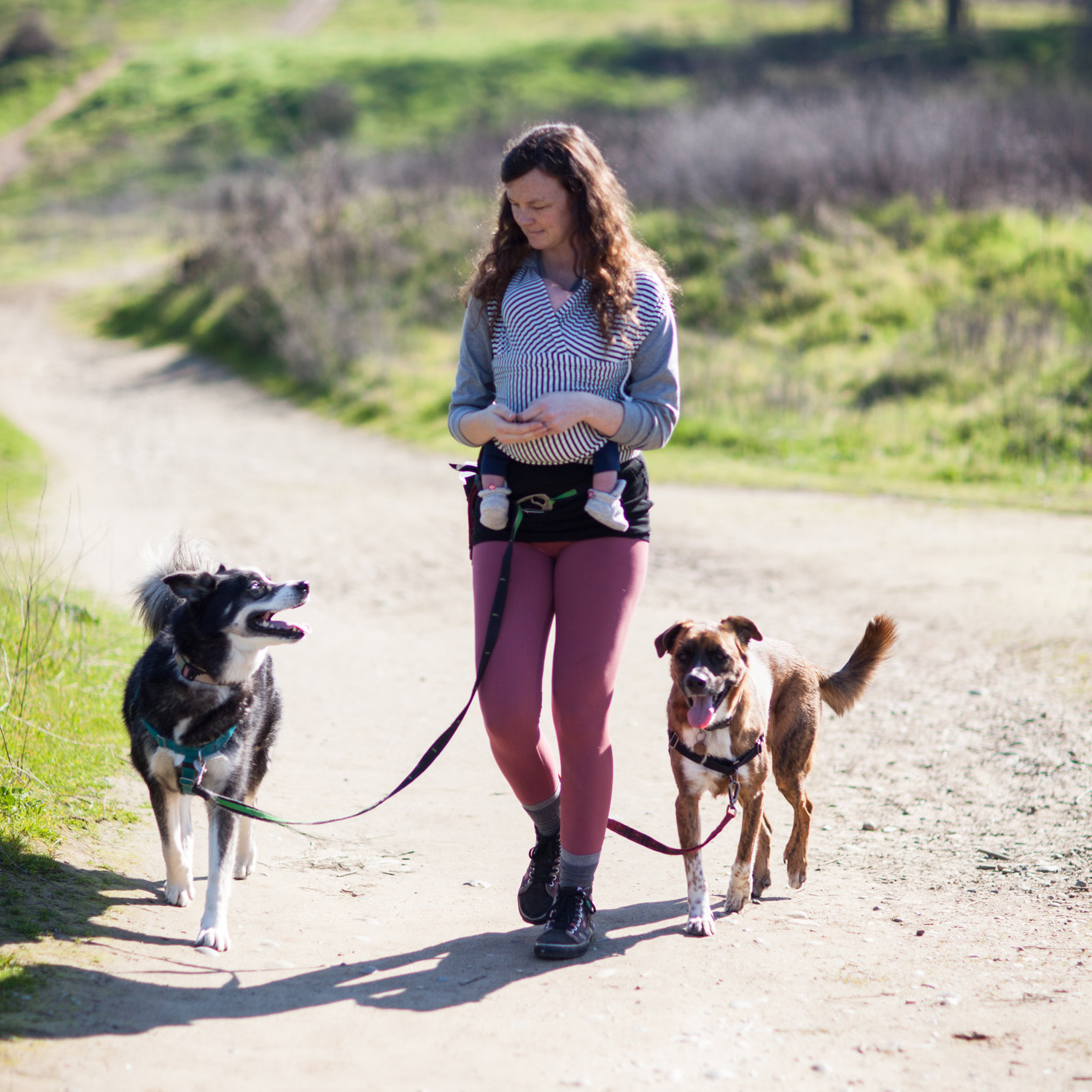Oftentimes when people begin to look into dog and baby prep, they are really focused on homecoming - that initial life-changing upheaval of a dog’s life that is bringing a new baby home. And don’t get me wrong, that’s a huge moment, and preparing ahead of time can really be instrumental in getting off on the right foot. But as the Family Paws saying reminds us: Babies grow, dogs age, adjust management at every stage.
As I wrote a few months ago, things change fast, and this means new management strategies and safety measures need to be implemented to keep our dogs and babies living harmoniously. My little guy, Wiley, just turned seven months old and I’ve been loving watching his personality emerge as he grows and changes. Every baby is different, of course, and they all hit their “milestones” at their own pace. But let’s talk about some of the changes that may begin to occur around this age and how we can make sure we’re prepared to guide our dogs through those changes.
Sitting Up
In my three month update, I already touched on the improved vision and how direct eye contact can be concerning for many dogs, but now that many babies will be spending more time sitting up, this change of posture can make eye contact more impactful. This is especially true now that most babies will have improved head control and may be swiveling their heads around to watch the dogs’ interesting antics!
A sitting up baby will be at face-level for many dogs, and we want to avoid our dogs going directly face-to-face with our babies for safety reasons. Face-to-face is a confrontational position in the “dog world” and not even something I recommend for dog to dog greetings for that reason.
Using management tools like baby gates, x-pens or playpens can help prevent uncomfortable closeness between your dog and baby’s faces. You can practice rewarding your dog for moving away from your baby when you notice any potential for tenseness, too! This not only helps create space, but also reminds your dog that moving away is always a viable option, AND helps create a good association with the baby since you are giving her good things in the presence of the baby.
Eating Food
Around six months of age, most babies will begin exploring solid foods in one form or another. This can be a very interesting development for many dogs, because it’s usually quite a messy process! As your dog realizes that the baby may be a source of food, she may begin lingering near the highchair during mealtimes.
While the clean up help may be appreciated (I actually wish my dogs were a little more thorough in this department, but they’re too picky to be much help), younger or more enthusiastic dogs may try out problematic behaviors like jumping up to try and steal food, which can be not only annoying but potentially dangerous.
The other downside to this burgeoning symbiosis is that some babies may delight in the company of their four legged friend and learn that flinging food on the floor is more than just an efficient way to rid yourself of unwanted broccoli stems. Wiley is particularly amused by everything Koa does, so I certainly think he had a strong potential for learning this particular trick!
Management can once again come in handy (gates, crates, etc during mealtimes), but we’ve been using our stationing skills to keep the dogs out of the way during meals. Then, once he’s done, I release them to come assess the mess and scavenge anything they deem to be of value.
Reaching
In the three month article, we talked about how Wiley had begun to learn to grasp objects, and the potential risk this posed for pinching and pulling on the animals. Well, now he’s taken things to the next level and is not only an avid grasper, but now actively reaches for objects (and beings) of interest.
As awareness of the dogs have increased, so has his interest, so it’s not uncommon for him to be tempted by a nearby tail or reach for a handful of fluff. It’s so important to prevent this from happening, no matter how “bombproof” your dog may seem! Even a super tolerant dog will eventually tire of being grabbed at, especially since babies at this age may have fine tuned their general aim but are still far, far away from being capable of gentle petting.
Management is huge here and for me this often looks like physically blocking Wiley’s hands. When the dogs choose to come close - in other words they see Wiley and I and actually come over to us (this is very different from simply choosing not to leave) - I will sometimes hold his hand as he reaches so that he can feel their fur without being able to close his fingers. This hand-over-hand petting is a good way to let him explore the dogs with their consent, without the possibility for injury or annoyance.

